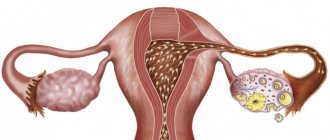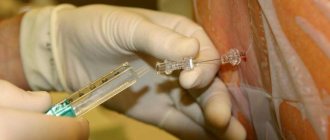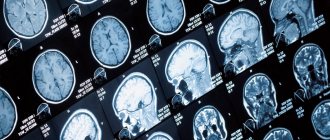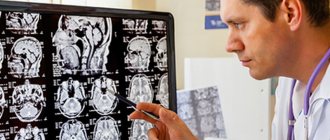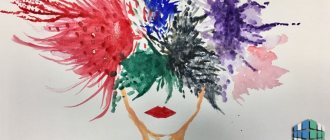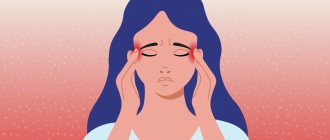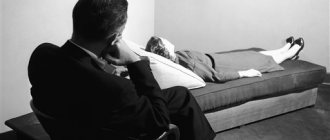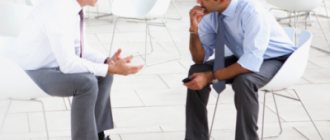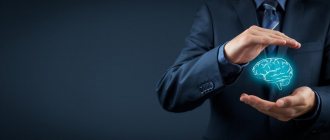Cerebral palsy (cerebral palsy) is a collective concept that generally combines under its name a list of forms and manifestations of central nervous system lesions that are similar in their etiology and symptoms. Most forms are characterized by muscle spasticity, although there are forms in which there is no spasticity, but there are cerebellar symptoms. The name of the forms is associated with the localization of spasticity and the depth of damage to the central nervous system from paresis, partial loss of innervation, to paralysis or plegia, complete loss of muscle function. In the first place, the cause of this disease is birth trauma, which can result in rupture of brain vessels or prolonged hypoxia due to blockage, compression of blood vessels; lack of oxygen for a long time is very dangerous for the brain. Also common causes: herpes, genetic disorders, cytomegalovirus, intoxication, past diseases of the pregnant woman.
The role of massage in the treatment of cerebral palsy in children.
Massage for children with cerebral palsy is always prescribed, but in the treatment process it still plays one of the main roles, not the main one. What is most important in the treatment of cerebral palsy cannot be said unequivocally, I would highlight the most important: drug treatment, exercise therapy (in all its diversity), massage, and in the late recovery period, orthopedic devices such as corsets, splints, verticalizers. The role of massage is great in conjunction with the above effective methods of treatment, and small when used alone. You have to act without massage if it turns out to be contraindicated, this happens when epilepsy or convulsions accompany the main diagnosis.
What kind of disease is this
Cerebral palsy or cerebral palsy is a chronic brain disease that is not characterized by a progressive course and can be right-sided, left-sided or bilateral. The pathology occurs with many clinical manifestations, covering motor functions. There are also secondary deviations that occur when certain structural elements of the organ are underdeveloped or damaged.
Considering the fact that today medicine has made great progress and there are a variety of treatment methods, the disease is still common: 1.7-5.9% among newborns. Moreover, the number of sick boys is higher than the number of girls.
In addition to motor disorders, disruptions occur in the intellectual and emotional-volitional spheres, speech function, visual and auditory systems. Many clinical manifestations cannot be cured. These remain with a person throughout his life, which is the reason for the patient being classified as disabled.
Goals and objectives of massage for cerebral palsy in children.
The goals of massage in the treatment of cerebral palsy in children are to reduce spasticity; prevention of the formation of contractures, prevention of stagnation of metabolic processes, extinguishing pathological reflexes, normalizing the functioning of the nervous system, as far as possible. To achieve such goals, it is necessary to solve problems to improve the mobility (elasticity) of tendons, relaxation of muscles and ligaments.
Goals such as a cure for a disease are difficult to achieve; in most cases, it is not possible to completely cure a child. Goals must be realistic, often they are long-term, so I recommend that parents save their nerves, strength and resources for long-term rehabilitation of the child. Don’t be fooled by promises to “get your child back on his feet,” those who work with such diagnoses understand perfectly well that miracles don’t happen, and someone takes advantage of the parents’ feelings and makes money from it. Achieving results in rehabilitation always requires a lot of work by specialists, the child and parents.
Indications and contraindications for the procedure
Direct indications for massage in children and adults diagnosed with cerebral palsy are:
- increased muscle tone;
- decreased muscle growth;
- impaired blood circulation and outflow of lymphoid fluid;
- poor general health;
- problems with posture (development of kyphosis, lordosis and other diseases of the spinal column);
- development of muscular torticollis;
- violation of the skeletal system (presence of flat feet, club feet, etc.);
- hip dysplasia.
Like any other medical procedure, massage has its contraindications. Contraindications to the classical procedure include:
- acute allergies;
- fungal skin disease;
- impaired integrity of the epidermis;
- development of acute respiratory disease.
Acupressure is not performed when:
- concomitant development of an infectious disease;
- presence of acute heart failure;
- impaired integrity of the skin.
Hardware massage is not performed for any skin or infectious diseases, inflammatory processes in organs or lymph nodes, or for advanced varicose veins.
It is important to do massage with exercise therapy for cerebral palsy.
The most important condition for achieving positive results in the treatment of cerebral palsy in children is the addition of exercise therapy massage with physical therapy. Moreover, it is advisable to carry out massage with exercise therapy in one procedure. Why?
1. This is due to the fact that muscles, ligaments and tendons need to be prepared for physical therapy, i.e. warm up and knead.
2. No massage can replace movement. Even passive exercises performed by a massage therapist will have irreplaceable benefits on the child’s body. And if it is possible to achieve the appearance of active movements controlled by the child, this is a big victory. Massage with exercise therapy for cerebral palsy in children can be carried out sequentially, i.e. first a general massage, then exercises or perhaps stirring.
3. The benefits of therapeutic gymnastics are also in teaching a child active, controlled movements that fill our lives, but we do not think about them, but simply use them. When the parts of the brain that provide smoothness, continuity, accuracy, strength and, in general, the ability to move limbs and other parts of the body are disabled, then through gymnastics we try to stimulate the brain to create neural pathways bypassing the affected areas, sometimes this is successful.
General recommendations
The procedure can be carried out either by a qualified specialist or by a relative of the patient at home. It is not difficult to learn this: during a lesson in a stationary environment, it is enough to observe the actions of a specialist, then try to repeat the movements at home.
During the procedure, certain areas can be stroked, pinched, kneaded and rubbed, and vibration movements can be used. In any case, only a doctor can determine the type of massage for cerebral palsy in adults and children, based on the individual characteristics of the disease.
There is no need to self-medicate or prescribe a course of therapy yourself. In this case, you can not only slow down recovery, but also cause additional harm to your health.
If the patient has increased sensitivity of the skin, it is advisable to use only acupressure, which does not involve kneading and rubbing large areas.
Before the procedure, you need to relax as much as possible and take the most comfortable position for yourself. Before the main movements, relaxing classical movements are performed. The procedure is prescribed in combination with other methods of treating cerebral palsy. Only an integrated approach to the treatment of the disease can achieve recovery.
Where to start massage for a child with cerebral palsy?
It is classically correct to start a massage from the back, but there are deviations from the rules. This usually depends on the tolerability of the procedure, or the individual characteristics of the child’s condition or behavior. We start with a back massage, because this is how we first treat the places where the spinal nerves exit the spinal canal, which then branch out into the muscles and other tissues. Those. This is a preliminary reflex effect on the muscles without touching them with your hands, and then the limbs are massaged. The sequence and principles of massage of the arms and legs for cerebral palsy depend on the form of the disease and the condition of the soft tissues of the extremities. If the child is small, then his strength limit for the procedure is less, or he may be very capricious, especially in the tummy position. In such cases, you have to do a massage according to an individual scheme for the child. It happens that we start a massage with problem areas right away; it is important to treat the most necessary areas, because... the child may begin to be capricious 20-30 minutes after the start of the procedure and things simply will not reach the right places.
Cerebral palsy: review of rehabilitation methods. Part 1
Children with cerebral palsy constantly undergo rehabilitation courses, using different methods in different centers. How are they different from each other? While understanding the methods of rehabilitation of cerebral palsy, Miloserdie.ru correspondent Sofya Bakaleeva collected so much material that it did not fit into one article.
The methods presented here are only tools for the rehabilitation and adaptation of a child with cerebral palsy. It is important that they fall into the hands of a competent specialist. In the hands of a professional rehabilitation therapist who understands his competence and takes into account and respects the interests of his patient, all these techniques become a way to give the patient with cerebral palsy sometimes independence, sometimes freedom of movement, but always self-confidence.
The main thing: every intervention, every new round of rehabilitation must have a goal. Not distant and not abstract - “to be healthy” or “to be like everyone else.”
Let's look at the right column and see the abbreviation - SMART (“smart”). The concept of SMART goals has long been used in business and in private life to solve specific problems, including in rehabilitation. It has proven its effectiveness.
1) Physical therapy (not to be confused with physiotherapy)
Age: any
Author: The first mention of the effective use of massage, manipulative techniques and gymnastics is considered to be 1813, when the father of Swedish gymnastics, Per Henrik Ling, founded the Royal Central Institute of Gymnastics (RCIG). However, the official birthday of the specialty “physical therapist” is considered to be 1894, when four British nurses united in a society to use therapeutic massage and gymnastics in their clinical practice. The World Confederation of Physical Therapy (WCPT) was founded in 1951 and today has 106 member countries.
What it is based on: the method is based on a scientific approach and the principles of evidence-based medicine.
Who is it suitable for: patients with a wide variety of diseases and conditions in the field of neurology, traumatology, orthopedics, cardiology, palliative medicine, with a very different course and prognosis.
Goal: To restore and maintain a person's ability to move and be independent to the maximum extent possible, develop functional movements, prevent or limit the development of complications such as contractures, deformities, bedsores, help the client control pain and maintain the functions of the respiratory and cardiovascular systems.
Objectives: the focus of physical therapy is movement, and the most active one, which is initiated by the patient himself. Physical therapists consider its restoration and maintenance to be the main goal of their activity. Any of our activities is connected with it, it helps to communicate with people, establish social contacts, and express feelings. In any of our movements, physical, social and psychological factors are inextricably intertwined.
The essence of the method: physical therapists use physical (natural) methods of influence on the client, based on movement, manual influence, massage, reflexology and the action of heat, light, high frequencies, ultrasound and water. But he considers mechanical force and movement to be the main ones. The result of the work of a physical therapist is the most active and correct movements, which are planned, initiated and performed by the client (patient) himself within the framework of his motor potential.
Method: the intervention of a physical therapist is:
— specially selected physical exercises: training strength, balance, movement components, etc. taking into account the client’s violations and a number of other factors;
— techniques that help the client perform a particular movement;
— selection and formation of the correct postures (body positions) that alleviate the human condition and/or prevent the occurrence of complications;
— techniques and techniques for properly moving patients;
— selection and adaptation of technical aids for rehabilitation;
— training clients and those who help them (if they have to move the patient) in correct motor behavior.
Principles: Currently, physical therapists, occupational therapists, and many other professionals use what is called a problem-oriented approach. The process consists of the following steps: assessment, intervention planning, the intervention itself, and evaluation of the effectiveness of the intervention.
The physical therapist's work begins with assessing all the client's structures and functions that may affect movement, mobility, and other functionality. Then the specialist, together with the client and/or his loved ones, sets clear and understandable intervention goals for the client and his family members.
Forms of work: a physical therapist participates in the work of an interdisciplinary team, that is, a group of specialists that includes doctors, nurses, speech therapists, psychologists, teachers and other specialists. In each specific case, the team is formed only from those specialists whose help a particular person and/or his family really needs. Team work is based on partnerships between specialists, all decisions are made jointly by them after discussions, but at the same time, each team member bears professional responsibility for their work. In addition to professionals, the team includes the client himself and, quite often, his relatives or other people close to him. Cooperation with the client, members of his family or people from his immediate environment is an essential condition for successful assistance.
Contraindications: no
Duration of the course: there is no idea of course therapy, the intervention is carried out to achieve a specific goal
2) Occupational therapy
Age: any
What it is based on: a scientific approach and the principles of evidence-based medicine. The term "occupational therapy" was adopted as the Russian equivalent of the generally accepted term "Occupation Therapy". As a specialty, occupational therapy was formed after the Second World War, when society was faced with the problem of mass disability of people of working age and the need to rehabilitate them.
Suitable for: anyone who has suffered an illness/injury or who has developmental disabilities from birth and who, for this reason, find themselves dependent on outside help.
Goal: to help restore a person’s ability to live independently to the maximum extent possible.
Objectives: to help people with various physical and mental disabilities actively carry out everyday activities, for example, caring for themselves (dressing, undressing, washing, eating, etc.), participating in productive activities - playing, working, as well as spending leisure time, for example , master hobbies, and thus achieve maximum independence in all aspects of daily life. Occupational therapy also prevents a decrease in the client’s activity, aggravation of disorders and deterioration of his condition.
The essence of the method: Occupational therapists work with clients who, due to their impairments, are limited in areas such as self-care, productive activities and leisure time. They not only analyze the impact of disorders on different types of activities, but also take into account the effect of personal and environmental factors (social, physical, economic) on the functioning of each client in specific situations. In general, the occupational therapist uses those activities that are important to the client and aimed at achieving the highest possible level of functioning, independence in daily life and, therefore, improving the quality of life. For example, for a child these may be the skills of dressing, eating independently, playing, and planning free time.
Method: occupational therapist intervention is:
— specially selected methods of training the client and/or his relatives and people caring for him;
— techniques that help the client complete one or another component of the selected activity;
— techniques for modifying and adapting the task facing the client, facilitating its implementation;
— various techniques for developing and training the functions of the arm and hand;
— techniques and techniques for the correct movement of patients, care and assistance in performing all necessary activities;
— use of various methods of environmental adaptation;
— selection and adaptation of technical rehabilitation aids.
Principles: Problem-based approach: assessment, intervention planning, intervention itself, and evaluation of intervention effectiveness.
The work of an occupational therapist begins with assessing the types of activities that are important and necessary for the client, the quality of their implementation, the client’s current capabilities and analysis of factors that hinder or help to do something effectively, including the features of the environment and the state of all structures and functions of the client. Then the specialist, together with the client and/or his loved ones, outlines specific goals for the intervention.
Forms of work: Occupational therapists work directly with individuals, groups of people or communities, helping them to do what they want, feel compelled or obliged to do, and adapt the activity and/or environment so that people can more effectively carry out worthwhile activities. they have a task ahead of them.
Contraindications: no
Duration of the course: there is no idea of course therapy, the intervention is carried out to achieve a specific goal
3) Bobath therapy
Age: any
Authors: a married couple from London - neurophysiologist Karl Bobath and physiotherapist Bertha Bobath - developed a system of special classes in the 40s of the twentieth century, which was called Bobath therapy. Nowadays, the Bobath concept is implemented as neurodynamic rehabilitation.
What it is based on: the brain’s ability to undergo neuroplasticity in changing environmental conditions, which encourage the improvement of motor behavior. During the existence of the technique, the focus of its application has shifted from trying to influence the restoration of the damaged nervous system to normalizing the patient’s movements. An important discovery was that it is not the muscles, but the brain that controls how the patient performs a movement or is in a static position. This means that the therapist can change the patient’s movements to more correct ones, using some specific sensory stimulation techniques.
Suitable for: people with movement disorders resulting from damage to the central nervous system
Goals: increasing the patient's functional activity, maximizing the efficiency of movement within the patient's capabilities (rather than restoring movement to normal levels), increasing his participation in social life.
Objectives of therapy: stimulation of normal motor development and prevention of contractures and deformities, work with muscle tone to improve the quality of movement.
The essence of the method: Using technologies for controlling and directing the patient's movements with carefully graded stimulation, the therapist strives to give a normal feeling of active movement, which is translated into the sphere of purposeful action. Bobath therapy is a neurodevelopmental therapy that does not have canonical exercises or complexes. Each time it is carried out individually. Bertha Bobath argued that the therapist in this method is obliged to “do what works best.” The therapist seems to “sculpt” the correct movement in his patient and strives for the most normal movement (posture) and maximum independence of the patient.
Method: The therapist combines techniques called sensory stimulation, inhibition and facilitation:
— inhibition is the inhibition of pathological movements, body positions and reflexes that interfere with the development of normal movements;
— facilitation is the facilitation of correct (normal) movements and body positions;
— stimulation is tactile and kinesthetic stimuli necessary for the child to better feel the correct movements and position of his own body in space.
As a result, a person’s usual sensations from movements and static holding of a pose change. And this makes it possible to correct postures and movements.
Principles of motor learning: active participation of the patient, skill training, setting goals that are meaningful to the patient. With Bobath therapy, the physical therapist must include his patient in joint activities, the child must consciously perform this or that action, which excludes a negative reaction on his part. If it is, the therapist’s actions are initially incorrect and cannot lead to any improvements.
Contraindications:
Epilepsy during active seizures
Severe mental disorders
Acute inflammation and febrile conditions
4) Vojta therapy
Age: any
Author: Czech professor of medicine Vaclav Vojta (1917-2000). From 1948 to 1956 he worked at the neurological clinic of Charles University in Prague. Since 1956 - Head of the Department of Child Neurology at the Clinic of the Faculty of Medicine of the University of Prague. In 1961, he was entrusted with the management of the clinic of the Faculty of Child Neurology in Prague. After the entry of troops into Czechoslovakia in August 1968, he found refuge in Germany, at the Orthopedic University Clinic in Cologne. In 1975 he became the head of the rehabilitation department of the Munich Children's Center.
What it’s based on: according to Voight’s theory, if you consolidate movements at the reflex level, the central nervous system will use them, spontaneous motor activity will appear in the form of developed movement, improving ergonomics in general. Professor Vojta theorized that by repeatedly inducing these “reflex-like” movements in the patient, the functionally blocked nerve networks between the brain and bone marrow were “unblocked” or “rewired.”
Who is it suitable for: the method is used to correct disorders in the musculoskeletal system, both in infants and older children. Vojta therapy is especially effective in infants, as they have not yet developed replacement movement patterns. Children aged 5-6 years and older have already developed such models, so experts focus on activating and maintaining physiological motor forms.
Goals: through the use of reflex locomotion, the elementary components of human straightening and movement should become accessible and applicable again, that is:
- body balance during movements (“postural control”),
- straightening the body against gravity,
- purposeful grasping and stepping movements of the limbs (“phasic mobility”).
Objectives: development of motor skills appropriate to the child’s age.
The essence of the method: inducing reflex motor acts (reflexolocomotion) by stimulating certain skin areas with the simultaneous application of a strictly oriented pressure vector. The procedure does not apply to the method of physical therapy. This is not physical training of movements, but an indirect effect on the central nervous system. The brain retains a program of “normal,” physiological movements, rather than learning substitute directions.
Method: the therapist applies pressure to certain areas of the body of a person who is in the initial position lying on his stomach, back or side. Irritations reflexively cause one of two complexes: reflex crawling on the stomach or reflex turning over from a position lying on your back or on your side through a position on your stomach to a standing position on all fours.
Principles: The procedure itself should in no case cause pain or fear. The activated state that therapy is aimed at achieving in infants during the procedure is often expressed in the form of a cry. Screaming is a means of responding to unusual activation in patients of this age. At an older age, when children can express themselves using language, they no longer scream.
Contraindications:
Acute infectious pathology
10 days after vaccination
Problems with the cardiovascular system
Osteogenesis imperfecta, glass bone disease, phosphate diabetes
Exacerbation of other chronic diseases
Convulsions of various origins
The following materials were used in preparing the review:
E.V.Semenova, E.V.Klochkova, A.E. Korshikova-Morozova, A.V. Trukhacheva, E.Yu. Zablotskis. Rehabilitation of children with cerebral palsy. Review of modern approaches to help rehabilitation centers M., 2018
K. A. Semenova Restorative treatment of children with perinatal damage to the nervous system and cerebral palsy M., 2007
https://physrehab.ru website of the ANO “Physical Rehabilitation” https://www.vojta.com website of the International Vojta Society
The review will continue.
Illustrations: Oksana Romanova
Author of the article: Sofia BAKALEEVA
Source: Mercy.ru
Share to VK Share to Facebook Share to Twitter Share to Goodle+
Therapeutic foot massage for children with cerebral palsy.
Two legs of an adult with aching joints
Almost all forms of cerebral palsy affect the limbs. Most often you have to work with muscle spasticity. The legs are the most difficult area due to the massiveness of the muscles. Despite the fact that the child may be small, the leg muscles are already so strong that you have to make a lot of effort and spend a lot of time on them to achieve any lasting relaxation. Leg massage for cerebral palsy in children can be carried out according to the classical scheme, but techniques for stretching spastic muscles are required, this greatly helps to relax the muscles. You can even say that massage is a preliminary warm-up for the muscles before stretching. We start massaging with stroking techniques, but this is only the first contact, so to speak, to notify the nervous system about the beginning and nature of the procedure, then rubbing, kneading, vibration techniques. Most of all, of course, we use kneading, which we alternate with stretching muscle groups. Spasticity in the legs in most cases affects the posterior muscle groups of the thigh and lower leg, adductors, pelvic muscles, and iliopsoas. The internal muscles of the pelvis can only be affected by stretching. Therapeutic leg massage for children with cerebral palsy is done at a slow pace, deeply, with an emphasis on the calf muscles, shin flexors, with the study of similarities and places of their attachment to the bones, alternating with passive, stretching spastic muscles, movements in the hip, knee and ankle joints. I also consider it important to have a tonic massage of antagonists of spastic muscles. We carry it out deeply at a fast pace so that the muscles tense. When the muscles of the antagonists are tense, the tense muscles relax better.
Hand massage for children with cerebral palsy.
Hand massage for a child with cerebral palsy is carried out according to the same principle as massage of the lower extremities. Relaxing massage of spastic muscles is usually the flexors of the forearm, hand, fingers, adductors of the arm, pronator of the hand and forearm. A relaxing hand massage begins from the upper sections, i.e. adductors, pectoralis major muscle, latissimus dorsi muscle and their synergists. We apply passive movements in the shoulder joint to the warmed and stretched muscles to stretch the muscles. Next, we stretch the biceps on the shoulder and tone the triceps, and continue passive extension at the elbow joint. We massage the forearm taking into account the tone and make passive movements in the LZS and it is important not to forget about the pronators, after the massage we stretch them with supination, also passive. If the fingers are in a fist, then we massage the hand and stretch the finger flexors by extending the wrist joint with the fingers previously unclenched and fixed.
What kind of massage is given to children for cerebral palsy?
The main type of massage is classic; acupressure is also added. The procedure is carried out in a differentiated manner, taking into account the individual characteristics of the child, the form and severity of the disease.
Vojta therapy is often prescribed to children with cerebral palsy; it is a harsh method and is not suitable for everyone. Children scream a lot during this therapy; in general, the method is based on the principle of irritation, which not every child can do. For example, if there are parallel diagnoses such as epilepsy, then I would recommend coordinating the use of Voight therapy with “ten” neurologists before doing it.
Is it possible to teach massage to parents with cerebral palsy?
It is possible to learn some basic techniques of massage and gymnastics, but it is better for parents to use them between courses, as homework. It will, of course, be more effective to work with a specialist, and the parents’ task is to maintain joint mobility and muscle stretching until the next course of massage, to the extent they can. This approach saves time on the next massage course. Those. The massage therapist no longer spends several sessions trying to return the muscles to their previous state in which they were left on the previous course.
What treatment for cerebral palsy in a child can parents carry out on their own?
From independent actions, we see from practice that parents can master a little massage, elements of exercise therapy, from physio-paraffin, ozokerite, also styling, elements of Vojta therapy, putting on splints, putting them on a verticalizer, and doing classes from a speech therapist-defectologist. Of course, this is not all at a professional level, but such a set of actions is no longer small.
Is it possible to cure cerebral palsy in a child with massage?
Practice shows that massage with all the “additives” gives a good effect to children in the treatment of mild degrees, and not all forms. A complete cure, of course, will not come in any degree or form. Therefore, advice to parents is not to be heartbroken, not to sell everything you have and spend it on all methods of treatment, even to popular charlatans. So far, not even a single ultra-modern center has cured a child from cerebral palsy. You can achieve good results in rehabilitation, but cerebral palsy cannot be completely cured. Even if it is not treated, you should not give up, massage and gymnastics should be done, because the child is growing, you need to try to maintain mobility of the joints.
The age of the child plays an important role in rehabilitation; while the child is small, he may have problems with motivation due to the fact that he tries many times to do some movement, but nothing works. The older the baby, the more conscious the fight against the disease for the right to move, albeit clumsily, becomes. For this, you need to maintain the child’s body in a state of readiness of muscles and joints for movement.
Our center’s specialists provide massages for children with cerebral palsy at home in Moscow. If you want to find a qualified and experienced massage therapist for your child, call +79266057470.
Other methods of therapy
Complete restoration of brain activity in cerebral palsy, alas, is impossible. If treatment for the disease is started promptly and fully, it is possible to partially restore the patient’s ability to independently care and normalize motor function.
The main goals of paralysis therapy are:
- stimulating the patient to self-care;
- prevention of the development of spinal pathologies;
- restoration of speech function and normal psycho-emotional state.
To solve the problems, the doctor prescribes additional treatment measures, taking into account the patient’s age, the form of paralysis, the severity of pathological changes, and concomitant diseases. These include physical therapy and taking medications that help restore normal muscle tone (for example, use Baclofen, Mydocalm, Dysport, etc.);
Physiotherapeutic procedures are actively used in the treatment of cerebral palsy. Special medical suits are no less effective. One of these is the Spiral suit, with which you can stimulate the body’s compensatory capabilities and reduce muscle spasticity.
A speech therapist will help restore speech function. Restore motor skills - therapeutic exercise equipment, walkers, bicycles, special chairs. If existing motor dysfunction cannot be eliminated using conservative methods, surgical intervention is performed.
During the operation, muscle contractures are removed, tendon plastic surgery, and interventions in the lumbar region are performed. In some cases, they resort to neurosurgical therapy - spinal cord stimulation.
Medicines that help improve blood flow in the brain are also used. These include the drugs Actovegin, Glycine, Cerebrolysin, etc. In addition, dietary supplements and products containing antioxidants are actively prescribed.

